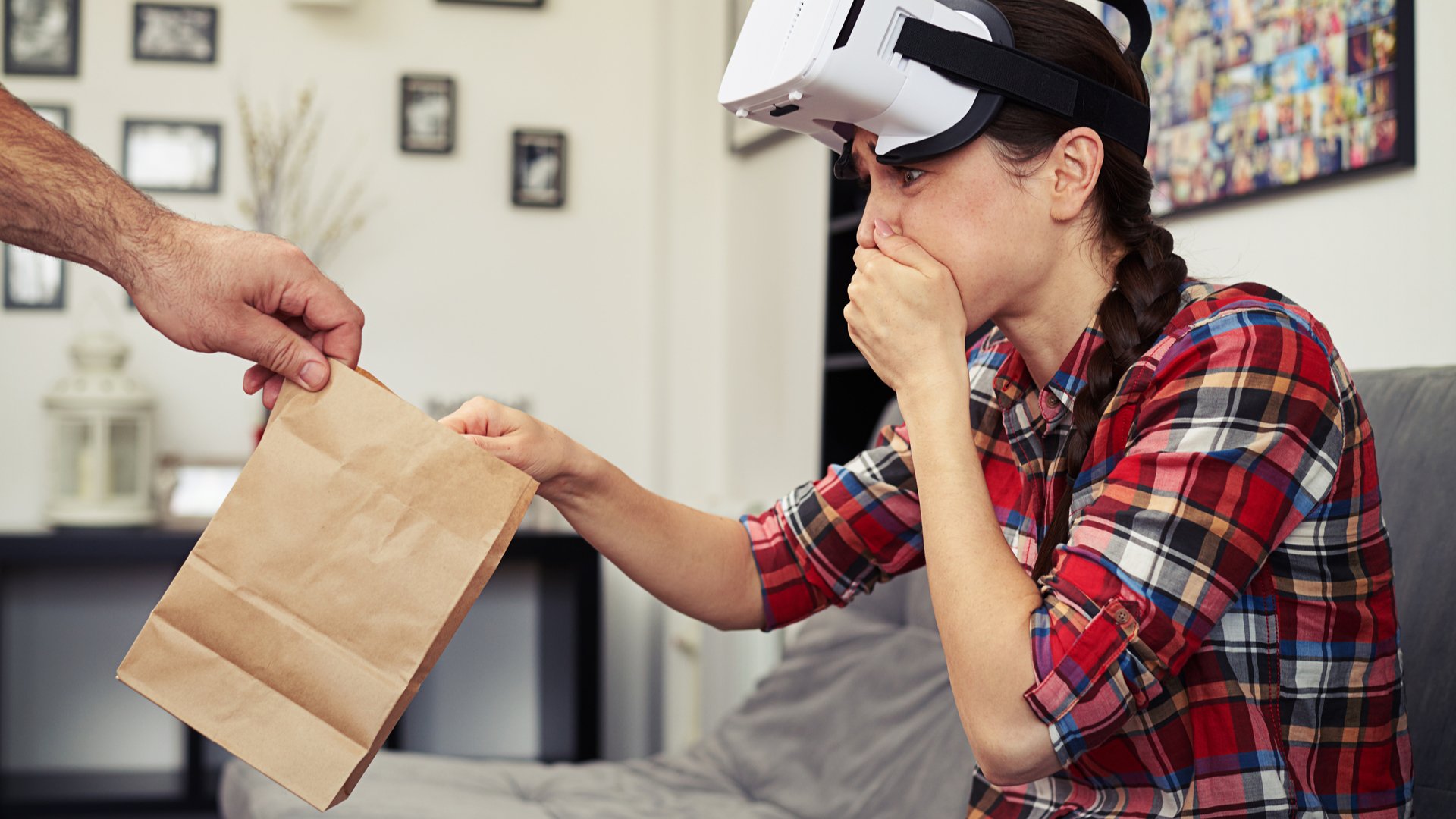5 Ways To STOP VR Motion Sickness and Nausea on the Oculus Quest 2
Nothing ruins a gaming experience more than feeling sick because of it. So nothing ruins VR on the Oculus Quest 2 more than Motion Sickness or Nausea that you might get for… no apparent reason. Some get Motion Sickness so Badly from Virtual Reality experiences that they can hardly play at all. It can be a huge let down to get your hands on a new Quest 2 and suddenly not be able to use it without feeling sick.
Nothing ruins a gaming experience more than feeling sick because of it. So nothing ruins VR on the Oculus Quest 2 more than Motion Sickness or Nausea that you might get for… no apparent reason. Some get Motion Sickness so Badly from Virtual Reality experiences that they can hardly play at all. It can be a huge let down to get your hands on a new Quest 2 and suddenly not be able to use it without feeling sick.
Motion sickness happens because your brain thinks that you are moving, but your body is also telling it that you are standing still. This conflict between your eyes, inner ear, and other nerves on your body can create feelings of nausea that is called Motion Sickness.
Don’t worry, because we’ve got some tips and methods to help mitigate, if not entirely remove, any Motion Sickness and Nausea that you are experiencing in VR.
Try Changing Your IPD
Your IPD, which is short for interpupillary distance, is the distance between the two lenses of your VR headset. IPD can vary wildly between different people, and can be easily forgotten once you’ve set up and used your headset once or twice. Well don’t forget about it. Having your lenses too far apart or too close can not only effect how clearly you see objects in a VR world, but also your motion sickness.
Even if you think your IPD is at a good setting, try adjusting it once or twice to see if it affects not only how clearly you see, but also any nausea you might be experiencing. Try putting your lenses closer together, or further apart. Give it a little time and play around with your IPD. You might be using your Quest 2 with it set far too far apart or far too close together without even realizing it. Not only will a better IPD setting decrease any Motion Sickness you might be experiencing, but it will also help you see more clearly in Virtual Reality.
Try A Better Headstrap
It’s no secret that the default cloth headstrap that comes with the Quest 2 isn’t very good. Not only can the straps and plastic pieces on it dig into your head in an uncomfortable way, but it can also fail to properly support the weight of the Quest 2 and cause the headset to sag on your face and move around a lot during play. This movement can actually contribute greatly to Motion Sickness while you are in Virtual Reality.
You want to keep your view of the virtual world as still as possible, so that the only movement your eyes and brain notice when you turn your head is the movement that your eyes and brain think should be happening. If your view shifts an extra inch or two due to your headset not being properly secured to your head then that can cause nausea and motion sickness by itself.
If you can’t get a new headstrap yet, then at least try tightening the Quest 2 headstrap and adjusting it to make it more comfortable. Properly adjusted, the default headstrap can be pleasant for at about thirty minutes of use at least. Of course if you can get a new headstrap then there are a lot of options to choose from. For a cheaper option you might want to try the KIWI Head Strap. There are other options, like the YOGE head strap, that include an external battery increases your Oculus Quest 2’s battery life.
Play A Little At A Time
Some new experiences just take time for your brain to get used to, and that is as much the case with VR as with anything else. Especially if your motion sickness doesn’t start to manifest until you’ve been in VR for a while, you might be better off just taking a break. This is more common than you might think. A lot of people aren’t capable of just strapping on a VR headset for hours when they first try it.
If you start to feel sick after using your Oculus Quest 2 for a while, then just put it down. Have a drink of water, lay or sit down for a little while until you feel normal again. Eventually, and especially with the help of the tips in this article, you won’t have to do that at all. Playing through your motion sickness will only make it worse, so give your eyes and brain a rest. The more VR you play, the more used to it you will get, and you will get a better tolerance for Virtual Reality movement.
You also might notice that certain experiences trigger your motion sickness more than others. For instance if you’re playing a flying game every time you get motion sick, then try to limit how long you play that game until you get more comfortable in it. Looking up through the canopy of a moving aircraft in VR is a very easy way to get motion sick. Maybe try some experiences sitting instead of standing, so that you can more easily keep your head stable as you play, and over time graduate to more intense experiences, and to standing.
Try Playing With A Fan On
Some VR gamers have said that their motion sickness is helped a lot by simply feeling some moving wind on their skin while they play. If you’re still getting sick try bringing a fan into the room and turning it on. It’s not completely clear why this works for some, but there is certainly a link between what your body feels, and your eyes and inner ear. So it’s at least worth giving a shot.
Check Your Game Settings
Since Virtual Reality developers are aware of how many people experience Motion Sickness, a lot of games have settings to help avoid or alleviate motion sickness. Often when your VR view is changed without your body physically moving (for instance, your view moves as your character in the game walks through the environment, but your actual body remains still) then this can cause motion sickness. Your eyes are telling your brain you are moving, but the rest of your body says that you aren’t. This is the same reason that some get motion sick by looking out of the window of a moving car, though just like with VR you can get used to that.
Until you get a greater tolerance for Virtual Reality movement there are alternative options in most games that will help you avoid feeling ill. The simplest is “vignette”. What vignette does is every time you move with a joystick to simulate your character walking, the edges of your screen will be blocked by a black border that will cover the edges of your view, meaning that you will focus directly on what you are looking at. This helps a lot of people still be able to use smooth movement in VR games on the Quest 2 while avoiding motion sickness.
If vignettte isn’t enough, a ton of games still offer the ability to play solely by teleporting around the world. Since teleporting simply places your in game view in a new location, it can be far easier on the senses. Though for some it can actually cause worse sickness than using smooth movement to slide your view around the game world. What gives you motion sickness can be somewhat unique to you, so just like with your headstrap or your IPD, it’s important to play around with the settings on your VR games to find what works best for you.
Hopefully the tips here can help you alleviate your motion sickness. Be sure to keep in mind what experiences and movement causes your motion sickness, as that might help you find a solution. For some VR Motion Sickness and the accompany nausea can be a huge damper on a lot of experiences, but the good news is that there are ways to help with it. This unfortunately does mean you might have to put in a little more effort to enjoy VR than others.




